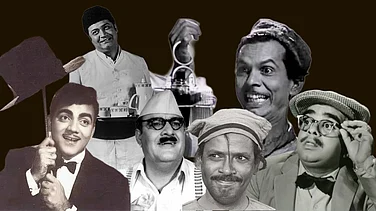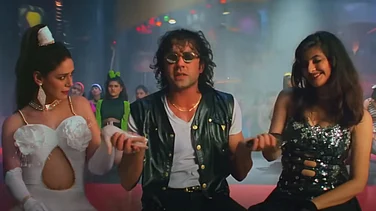Nadav Lapid’s criticism of director Vivek Agnihotri’s film ‘The Kashmir Files’ has unleashed a storm on social media with widespread reactions to Lapid’s comments not just by the netizens but also Agnihotri himself, actor Anupam Kher, Agnihotri’s wife Pallavi Joshi and Israeli envoy in India - Naor Gilon, who publicly slammed his countryman for his opinion. For the unversed, Lapid in his closing statement at the Indian International Film Festival (IFFI) referred to ‘The Kashmir Files’ as a propaganda film.
Propaganda is a biased piece of information that aims to influence people and engage them on an emotional plane rather than a rational one to further a particular agenda. Since art is subjective, the line between a rational piece of art and propaganda often seems to be blurred. But often the devil lies in the detailing – excessive use of loud music, graphic imagery, and facts which are deliberately concealed to lend a particular colour to the information being conveyed.
History has many instances where propaganda has been able to not just influence people and make them believe a certain lie but has led to dangerous outcomes. The best case is that of Joseph Goebbels - the chief propagandist of the Nazi party. Over a period of time, Goebbels has become a figure that many propagandists look up to irrespective of their political inclination and the reason behind the same is his acute sense of twisting the information. His grip on media particularly the radio and films allowed the Nazi party to discriminate against the Jews thereby blinding the people from empathy and resulting in the horrors of the holocaust. His doctorate in Philology only helped him.
However, Goebbels is not the foundational stone of propaganda. Consider the propaganda films made by Soviet Russia - ‘Storm Over Asia’, ‘Lenin In October’ or ‘The North Star’ or the North Korean films that sing unanimous praise for their Supreme leader Kim Jong-un or his grandfather Kim Il-sung.
Back home in India, a cursory glance at many social media videos from the theatrical exhibition of ‘The Kashmir Files’ points to the very instance of hatred against the Muslims at large as people in cinema halls can be seen angered by the graphic imagery coupled with the film’s narrative.
However, ‘The Kashmir Files’ is not the sole culprit, Hindi cinema of late has churned out many films which cater to selectivism. The 2018 release ‘Sanju’, effectively white-washes Bollywood star Sanjay Dutt’s image and absolves him of stocking up ammunition in the garb of the actor “only helping his friend in need” unaware of his intentions during the Mumbai riots.
Although Sanjay Dutt has served his sentence as per the ruling and court’s directive, the denial of the crime marks the film as a piece of propaganda. And this coming from a superstar director like Rajkumar Hirani makes it more disturbing and difficult to digest. But again, good propaganda when handled by a wizard multiplies its strength of influence.
Vivek Oberoi-starrer ‘PM Narendra Modi’, the cinematically atrocious film, too walks the same line as it presents a completely different account of what transpired during the 2002 Gujarat riots denying several accounts of the victims. ‘The Accidental Prime Minister’ was released in the same year as the story of India’s other Prime Minister - Manmohan Singh, based on a book by Sanjaya Baru, who served as the official spokesperson and media advisor to Manmohan Singh from May 2004 to August 2008, was heavily criticised on several aspects including the caricaturish portrayal of Manmohan Singh by Anupam Kher reducing the former PM to the puppet of the Gandhi family.
Winding the clocks a little back will throw up another film ‘Toilet: Ek Prem Katha’ another propaganda which acts as a flexing muscle for the ‘Swachh Bharat’ campaign the efficacy of which is questionable, to say the least. The Union Government of Prime Minister Narendra Modi, which put the ‘Swachh Bharat’ mission in action back in 2014 shortly after assuming the PM's office, has stated that open defecation rates have plummeted unbelievably. But, a 2019 study by the non-profit Research Institute for Compassionate Economics (RICE), shows 44% of the rural population across four large Indian states still defecate in the open.
One effective way of identifying a propaganda film is to see the source of finance behind the movie. Since filmmaking is an expensive art form, a lot of money rides in the business with many stakeholders laying a claim on a movie. The common ground in such cases is achieved by the means of vested interests. The answer to who funds a film and a little history of that person(s), their political connections and their past can help you identify a propaganda film and its spectrum.
(Disclaimer: Akshay Acharya is an Independent Filmmaker and a Senior Entertainment Journalist. Views expressed are personal.)



























